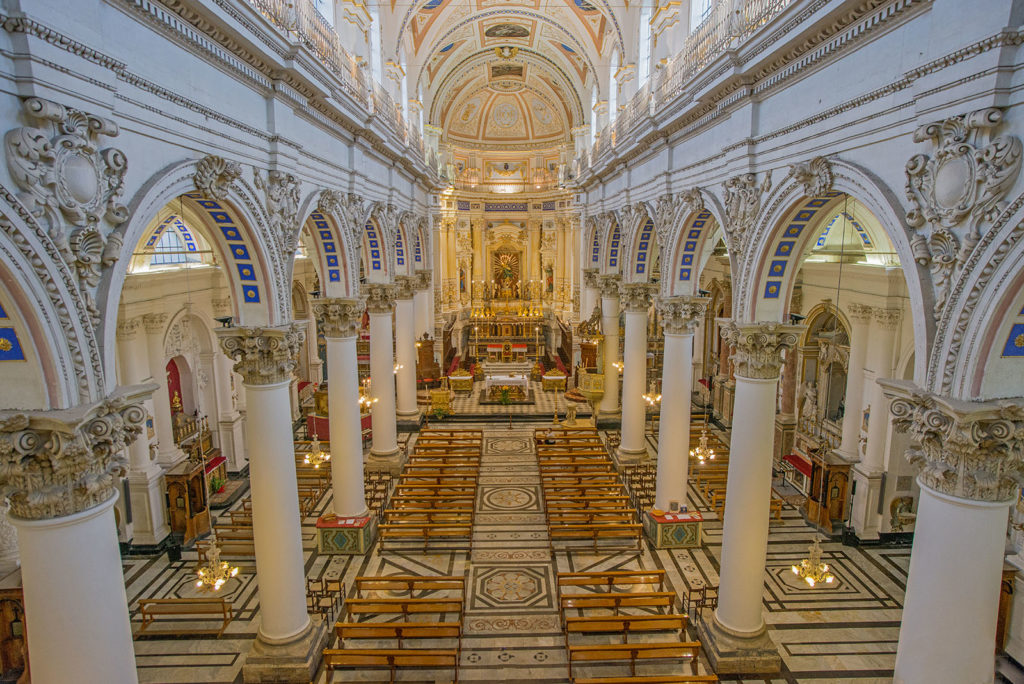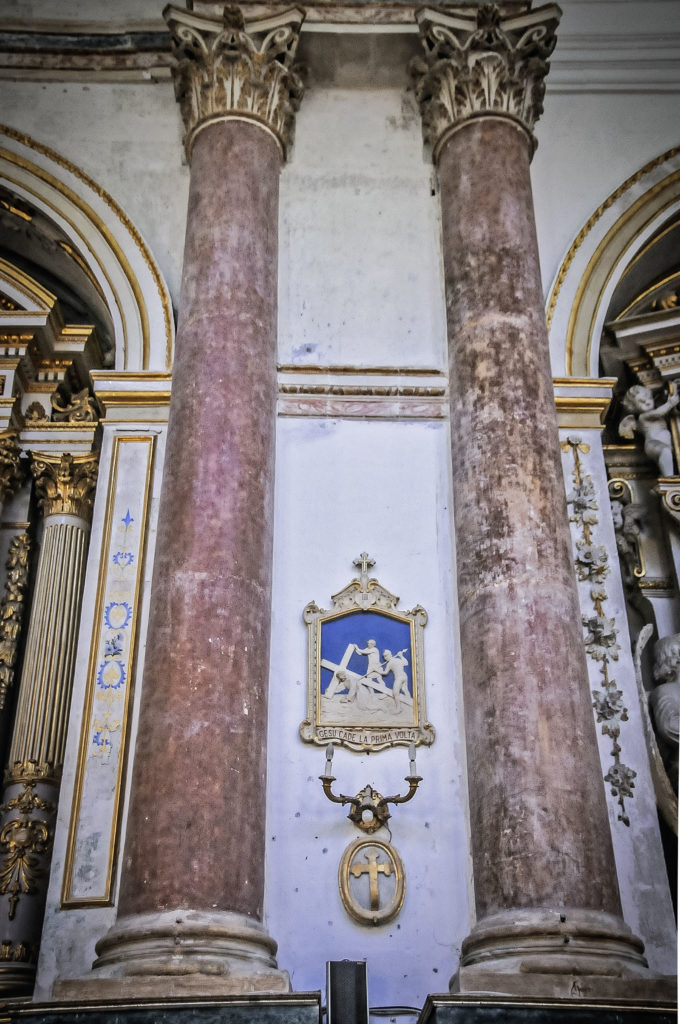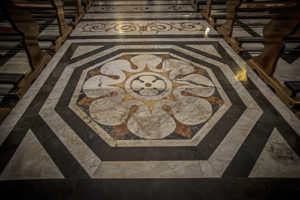The interior of the church is clearly different to the austere exterior.
Though the architectural forms are more sober than in other Baroque churches, the decorations are sumptuous and cover the entire surface of the
intradoses
of the vaults, concentrated in the apse area.
 The interior space is divided into three naves marked by fourteen columns with Corinthian capitals and arcades leading to the apse, the central point of the church.
The interior space is divided into three naves marked by fourteen columns with Corinthian capitals and arcades leading to the apse, the central point of the church.
The vault of the central nave is decorated with sixteen painted medallions and frescoes depicting stories from the Old Testament by Gian Battista and Stefano Ragazzi, completed in 1780.
 The side naves are defined by niches and altars luxuriously decorated with precious materials and separated by
coupled columns
The side naves are defined by niches and altars luxuriously decorated with precious materials and separated by
coupled columns
, some in marble, others decorated in stucco. A pleasant lighting effect is created in this area thanks to the soft light entering from the lunette windows, which are also decorated on the inside.
The 1864 floor is made up of polychrome marble, white marble and
black pietra pece
where geometric designs and curvilinear decorations alternate with those of the vault. Also in this case, the different use of polished and opaque materials causes light to be reflected in different ways, thus creating multiple perceptions of the room in a continuous play of illusory effects.